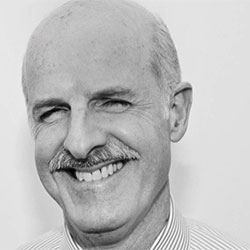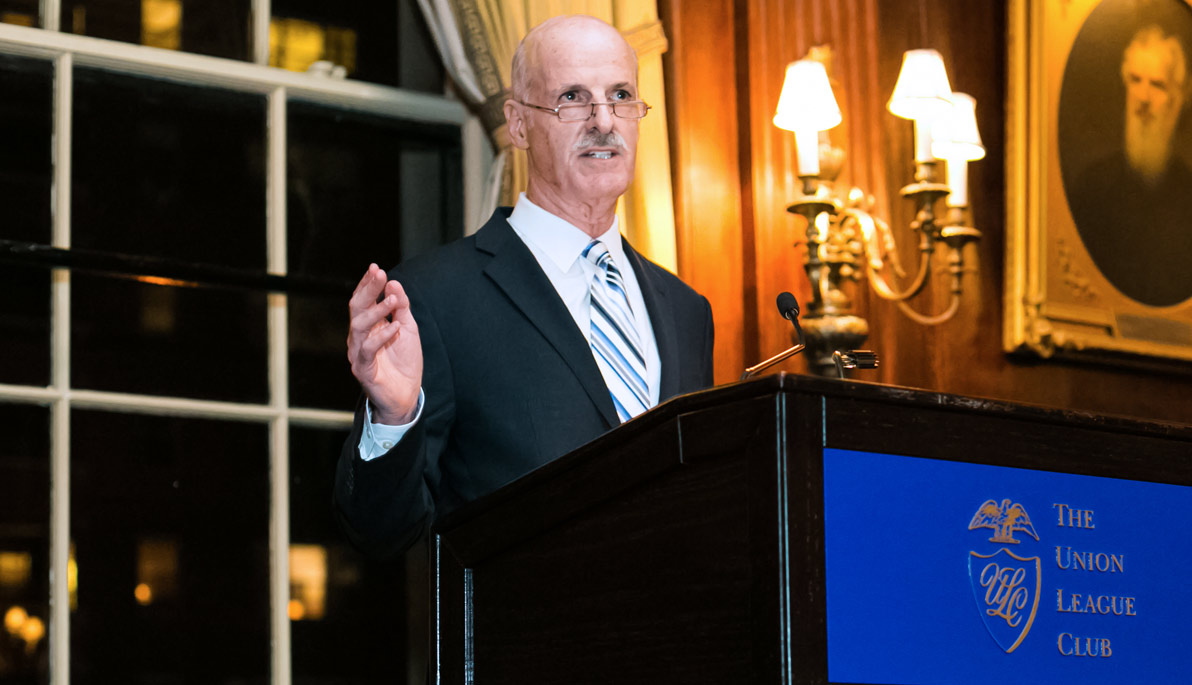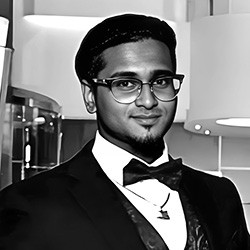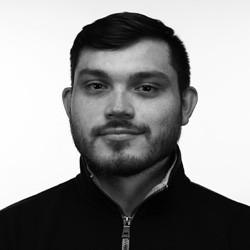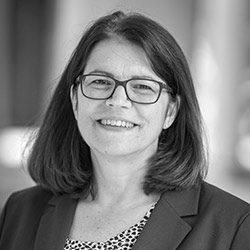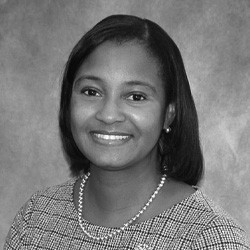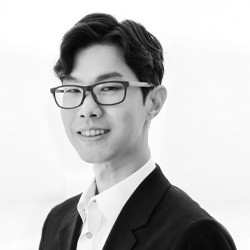Photo: Gering speaks at the Alumni and Friends Reception at the Union League Club.
John Gering was set on being a musician until his neighbor and high school chemistry teacher suggested he look into architecture. It wasn’t completely out of the blue. Gering helped his father, a part-time builder, and another neighbor, who was a contractor, during the summers. Reflecting back, he thinks the two career paths were even similar in some ways. “You’re always looking for the next gig,” he says. Gering enrolled in NYIT shortly after the architecture program was established, which he describes as an exciting time. “A lot of the professors were very passionate about what they did. I was so well prepared for the National Council of Architectural Registration Board exam that I passed it in one shot.”
Gering’s professors instilled in him a similar love of the field. Now, three decades later, he is managing partner of HLW International, a global architecture, engineering, and design firm. With headquarters in New York City, the group also has offices in New Jersey, Los Angeles, London, and Shanghai. The origins of HLW date back to 1885. The firm helped shape New York City’s ever-changing skyline— from the first telephone building (the Metropolitan Telephone Building) to one of the very first skyscrapers (The New York Times Building). In recent years, HLW has created studios for CBS, Fox, CNBC, ESPN, HBO and other networks. “We design a lot of media broadcast facilities all over the globe,” says Gering, whose goal is to further increase HLW’s global broadcast client base.
For his work and commitment to the university, Gering was honored as the spotlight alumnus at the Alumni and Friends Reception at the Union League Club last year, hosted by the Friends of NYIT School of Architecture and Design. Looking back at his time at NYIT, he recalls one of his favorite professors, Dr. Pepper, who taught the “lost art” of rendering (depth of field, color, and perspective). Gering explains that while architects use technology to do those things today, he learned broader skills that remain essential. “Technology can’t replace knowledge and thought processes, but it can enable them,” he says. “In architecture if you do it fast, things will go wrong. You must look at the big picture.”
His advice to architecture students: “Do the right thing. No matter what it is. Have a conscience and a compassion for others. Architecture is collaborative, and those who can work in teams will succeed. Don’t run from big and bold challenges. Be prepared to fail—that’s how you learn—then pick yourself up and go on.”
